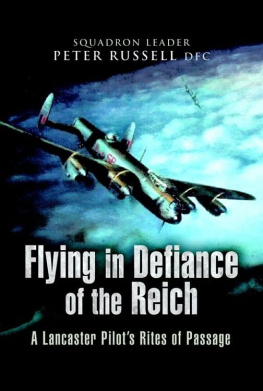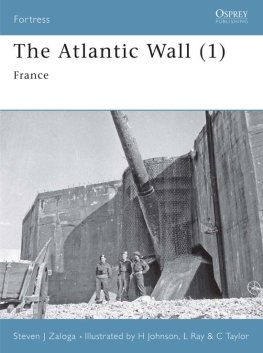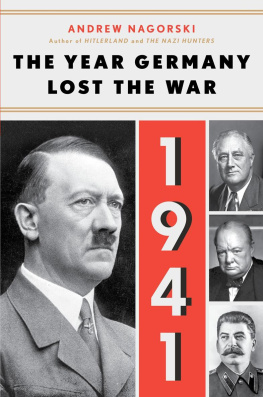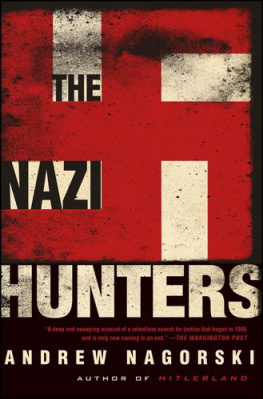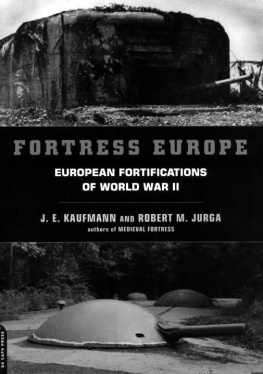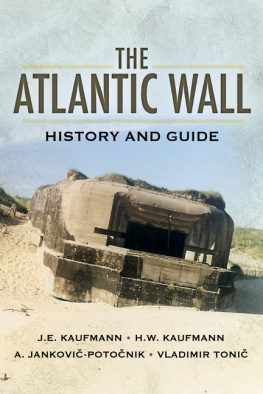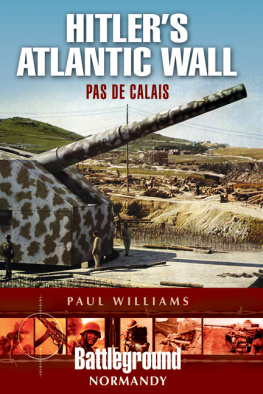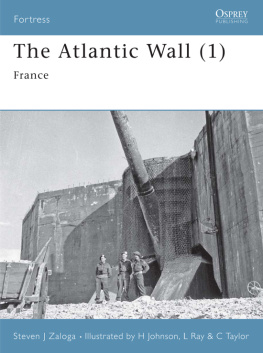On December 7, 1941, the Japanese empire attacked the U.S. military installations in Hawaii. Four days later, Germany's dictator, Adolf Hitler, fulfilling a treaty with Japan, declared war on the United States. Having sealed with that act the developing alliance between the United States and Great Britain, Hitler's Third Reich speeded construction of a formidable "Atlantic wall," to protect the exposed beaches of the Netherlands, Belgium, and northern France. This rampart was a massive system of fortifications, obstacles, and warning centers intended to thwart an Anglo-American invasion of Nazi-occupied Western Europe. Breaching the Atlantic wall of Hitler's "Fortress Europe" was the major strategic problem confronting British and U.S. military planners in late 1941. The two Allies based their offensive strategy on the belief that Germany was the strongest of the Axis powers and therefore should be defeated first. An air offensive against Germany was an important component of this strategy. Properly conducted, it would enable the Allies to leap the Atlantic wall and damage the industrial foundations of the Third Reich well before Allied ground troops penetrated the coastal barrier. The Allies held the air forces in the Pacific and Far East to a minimum and concentrated on building a formidable force on English soil capable of striking the Nazi heartland and, eventually, of supporting a cross-channel invasion and a victorious Allied advance across Europe.
Bombing Behind Enemy Lines
At the outbreak of the Second World War, the United States Army Air Forces (AAF) already possessed a broad strategic plan, designated AWPD-1, for an aerial offensive against Germany. Prepared by the Air War Plans Division in July 1941 at the request of President Franklin D. Roosevelt, the plan's first priority was to attain air superiority by destroying the German aircraft industry and operational fighters. The second priority was to destroy the German electrical power grid, transportation network, and oil industry. When these objectives were accomplished, the AAF would provide direct tactical support for the ground invasion of Europe. The story of the AAF in Europe is largely one of the struggle to successfully apply the broad precepts of AWPD-1 to operational realities. The Americans first constructed a logistical infrastructure in England to sustain the strategic bombardment of occupied Europe and Germany. The AAF and the Royal Air Force (RAF) then launched a combined bomber offensive, striking the enemy day and night. By the spring of 1944, the AAF had accumulated enough heavy bombers and long-range escorts to achieve air superiority. With the invasion of Normandy imminent, the air arm turned its attention to the tactical support of ground forces breaching the Atlantic wall. With Fortress Europe's westernmost barrier penetrated, the AAF continued to bombard Germany's few remaining strategic targets and to support Allied ground troops until the surrender of Nazi Germany in April 1945.
The AAF began to implement AWPD-1 as soon as the United States entered the war in December 1941. Almost immediately, Allied military leaders started to amass forces in the United Kingdom, with an eventual goal of invading Nazi-occupied Europe. As part of the buildup known as Bolero, the War Department ordered the Eighth Air Force to the United Kingdom. Comprising the VIII Bomber Command, the VIII Fighter Command, the VIII Air Support Command, and the VIII Service Command, the Eighth Air Force was dedicated from its establishment to the strategic bombardment of Germany.
As the American air units began to arrive in Britain, RAF and AAF leaders disputed the proper role of heavy bombers. The Americans wanted to conduct daylight precision bombing. The RAF leaders pointed out that they had flown daylight missions early in the war, but switched to night missions to curtail heavy losses. Based on their experience, the British were confident that night-time area bombing was the most effective way to employ heavy bombers and invited the AAF to join them in their effort. Maj. Gen. Carl A. Spaatz, commander of the Eighth Air Force, and Brig. Gen. Ira C. Eaker, commander of the VIII Bomber Command, disagreed vehemently with the British. They argued that the only way to achieve air superiority over Europe was to force the Luftwaffe to fight in the daytime. After the Luftwaffe had been defeated, the heavy bombers could cripple the enemy by destroying the electrical power network, petroleum industry, and other strategic targets listed in AWPD-1. At this point, Spaatz was confident that strategic bombardment could defeat the Germans without an invasion, but first the United States had to demonstrate that American airmen could carry out accurate, daylight bombing missions without heavy losses.

Lt. Gen. Carl A. Spaatz, standing foreground, and Gen. Henry "Hap" Arnold, seated.
Early Strategic Missions
American daylight raids began on August 17, 1942, with the VIII Bomber Command's successful mission against the railroad marshaling yards at Rouen-Sotteville, France. Twelve B-17s, heavily escorted by RAF Spitfires, accurately bombed the yards and returned without losses. The heavy bombers and their escorts flew eight more successful missions before suffering their first combat loss. Excited by the success of the first nine missions, Spaatz and Eaker optimistically reported to Gen. Henry H. Arnold, the AAF commanding general, that daylight bombing missions were feasible. Shallow penetration raids into France continued while the Eighth Air Force slowly acquired new bomb groups and began building its strength.
By mid-1942, German U-boats operating out of French ports were decimating Allied convoys in the North Atlantic. In October, the Allied commander-in-chief, Gen. Dwight D. Eisenhower, hoping to reduce the number of U-boats at sea and to disrupt their refitting operations, directed the Eighth Air Force to give the destruction of the submarine facilities top priority. These raids were not part of the strategic offensive, but they provided U.S. aircrews with valuable experience in daylight operations. The AAF, however, inflicted little damage on the solidly constructed U-boat pens, and German submarines continued to operate from French ports until the Allied ground forces drove them out in the fall of 1944.

![Russell Leaping The Atlantic Wall - Army Air Forces Campaigns In Western Europe, 1942-1945 [Illustrated Edition]](/uploads/posts/book/94591/thumbs/russell-leaping-the-atlantic-wall-army-air.jpg)



